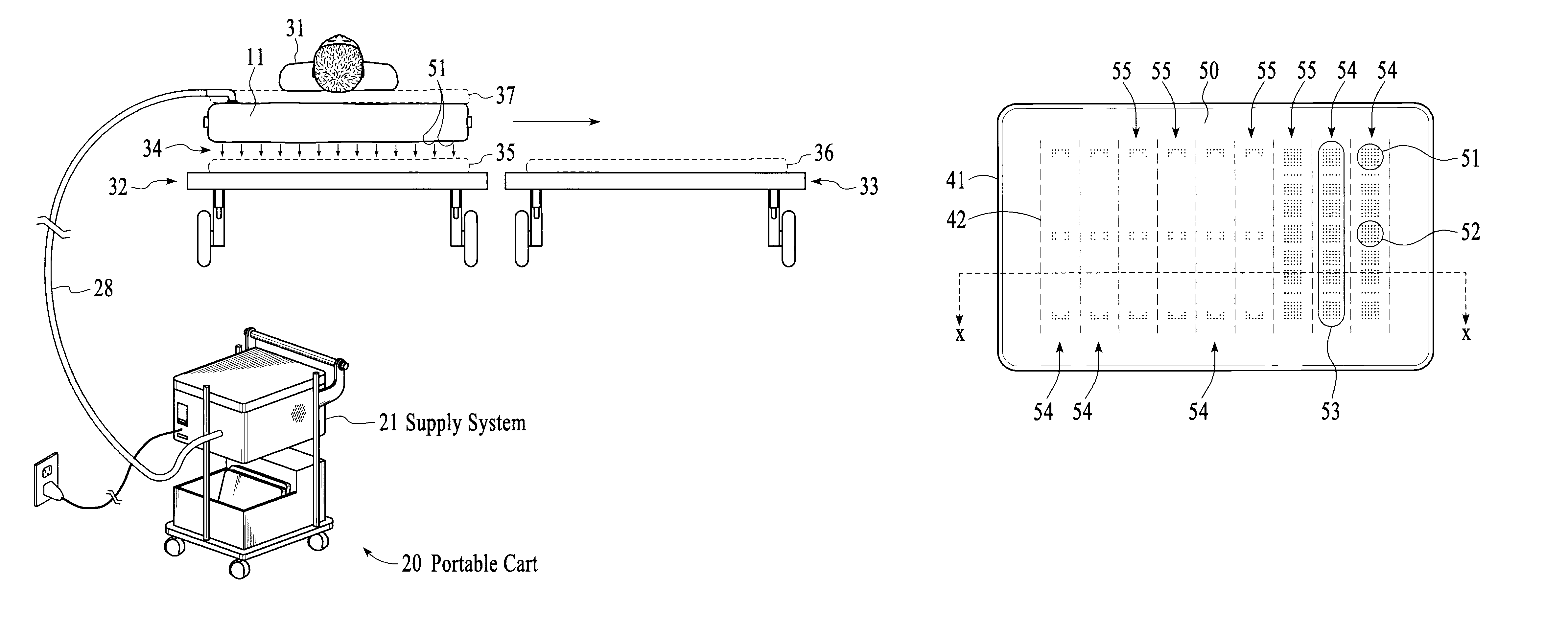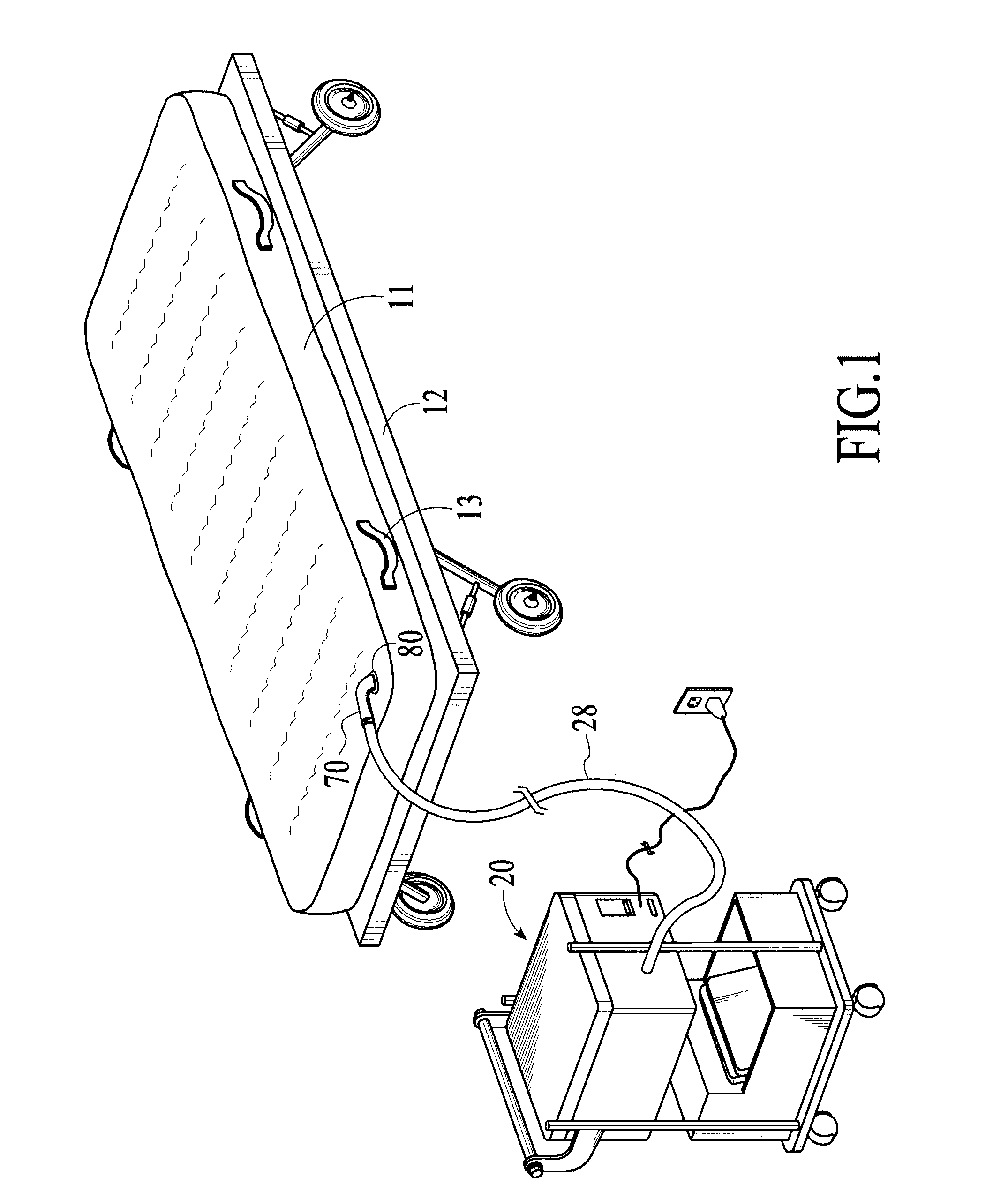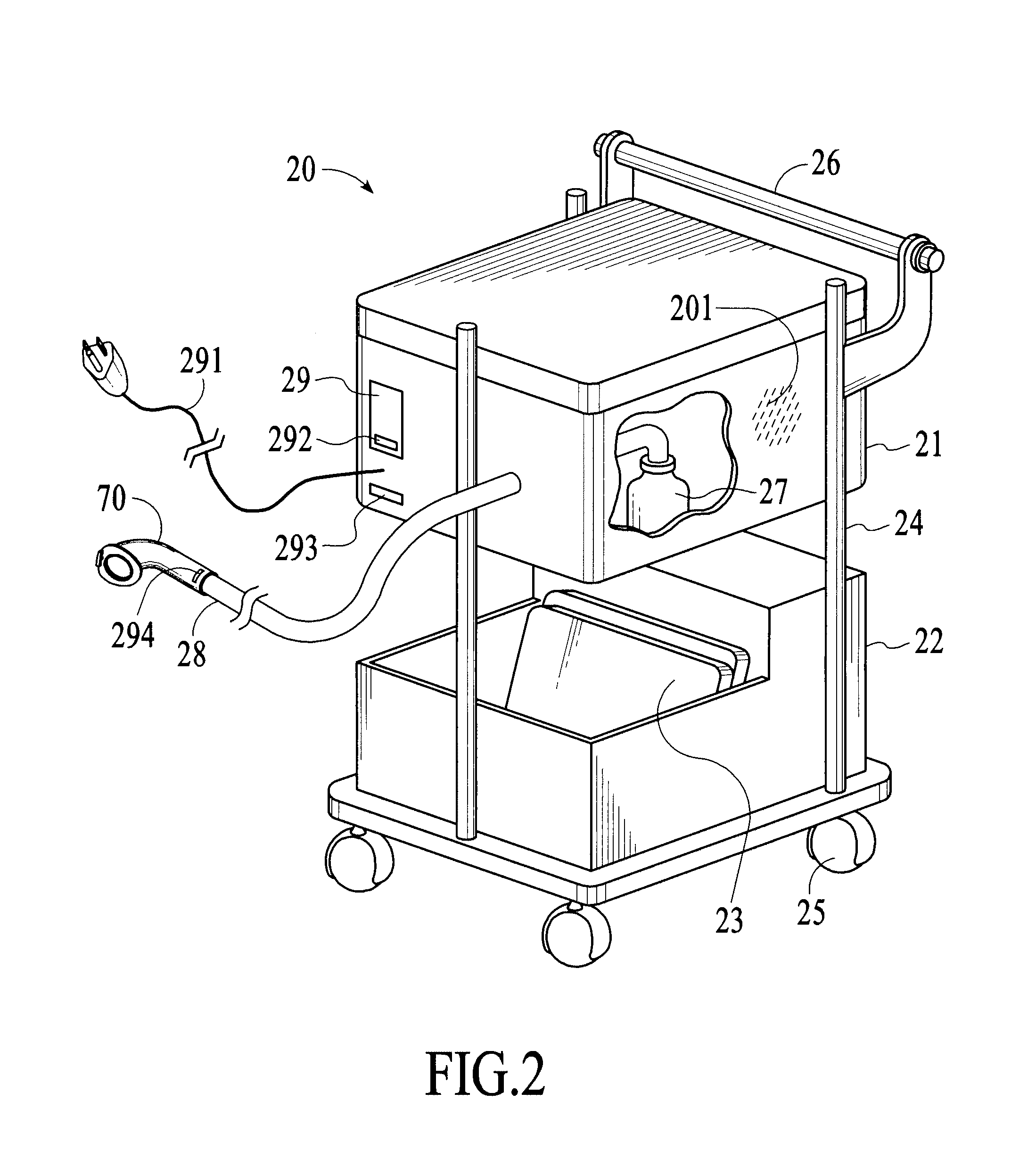Disposable patient transfer mattress
a mattress and patient technology, applied in the field of disposable inflatable mattresses, can solve the problems of transferring patients with minimal handling, patient's body may not be able to withstand the stresses and strains of home, and achieve the effects of reducing material and manufacturing costs, reducing labor intensity, and reducing labor intensity
- Summary
- Abstract
- Description
- Claims
- Application Information
AI Technical Summary
Benefits of technology
Problems solved by technology
Method used
Image
Examples
Embodiment Construction
[0022]An embodiment of the present invention is illustrated generally in FIG. 1 as applied to a planar item 12, which in this case is represented as a stretcher. In this embodiment, a portable air supply cart 20 is provided for supplying air to an air mattress 11. The portable air supply cart 20 is connected to the air mattress 11 by means of a flexible hose 28 with a connector 70 which is received by a receptacle 80 integrated into the air mattress 11. The term “air” as used in the present disclosure refers to air or any other gas that can be used to inflate an inflatable mattress. “Air mattress” therefore refers to a mattress that can be inflated with any such gas. The planar item 12 can be any type of bed / surface for supporting a patient, such as a stretcher or hospital bed, and will be referred to herein as a bed apparatus. The inflatable air mattress 11 can be positioned on a firm surface such as planar item 12 illustrated in FIG. 1, or alternatively the air mattress 11 can be ...
PUM
 Login to View More
Login to View More Abstract
Description
Claims
Application Information
 Login to View More
Login to View More - R&D
- Intellectual Property
- Life Sciences
- Materials
- Tech Scout
- Unparalleled Data Quality
- Higher Quality Content
- 60% Fewer Hallucinations
Browse by: Latest US Patents, China's latest patents, Technical Efficacy Thesaurus, Application Domain, Technology Topic, Popular Technical Reports.
© 2025 PatSnap. All rights reserved.Legal|Privacy policy|Modern Slavery Act Transparency Statement|Sitemap|About US| Contact US: help@patsnap.com



